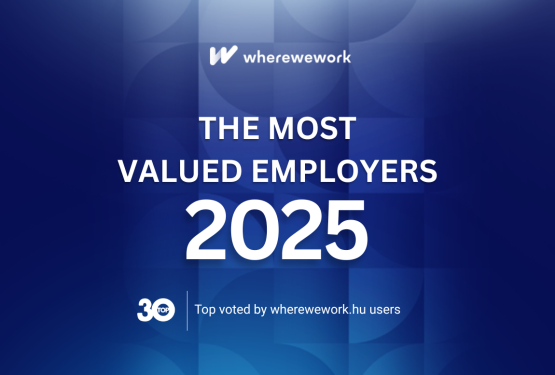Share
10 HR Trends for 2026: How to Build a Competitive HR Strategy

In the context of a constantly evolving labor market, marked by rapid technological advances and demographic shifts, HR departments must anticipate trends to stay competitive. According to projections for 2026, based on reports from organizations such as Deloitte, Forbes, and SHRM, the focus is shifting towards integrating technology with the human factor, retaining talent, and adapting to flexible work models.
This article explores 10 key HR trends, offering practical insights for building an effective HR strategy that attracts and retains talent in a globalized environment. Each trend is supported by recent data, and implementing them can transform HR from a support function into a strategic driver of the business. Here they are:
1. AI Integration and HR Process Automation
AI is becoming an essential "copilot" in HR, automating repetitive tasks such as CV screening, employee sentiment analysis, and leave requests processing. By leveraging algorithms, companies reduce recruitment time by up to 50% and minimize bias.
Strategy: Invest in AI tools integrated with existing HR systems, and train teams to combine AI capabilities with human judgment to avoid resistance to change.
2. Skills-Based Hiring
The shift from diplomas to real skills allows access to a more diverse talent pool, reducing training costs and accelerating productivity. According to Forbes, 90% of employers report better hiring decisions with this approach.
Strategy: Develop skills-based assessments, partner with upskilling platforms, and implement internal reskilling programs tailored to the company’s needs, especially in industries such as IT and healthcare.
3. Predictive Analytics and Data-Driven HR
Predictive analytics helps anticipate turnover, engagement levels, and productivity, with the global HR analytics market projected to reach USD 28.1 billion by 2026. This enables proactive decisions, such as early interventions for retention.
Strategy: Implement AI-powered dashboards for real-time monitoring and integrate data into strategic planning while ensuring GDPR compliance for data privacy.
4. Hybrid and Flexible Work Models
Over 37% of companies plan headcount growth in 2026, making hybrid work models the new standard for attracting global talent. In Europe, companies like Unilever continue hybrid models to secure a balanced work-life experience for both employees and employers.
Strategy: Develop clear remote work policies, implement collaboration tools, and offer tailored benefits (such as coworking space subscriptions) to enhance retention, particularly as 66% of employers see retention as a top challenge.
5. Mental Health and Wellbeing 3.0
Holistic wellbeing goes beyond basic programs, encompassing physical, mental, and financial health, increasing performance by 4.6x when employees feel valued. This trend also links to ESG, such as eco-friendly commuting options.
Strategy: Provide access to therapy, personalized wellness programs, and regular assessments, integrating employee feedback to reduce burnout and improve engagement.
6. Diversity, Equity, and Inclusion (DEI)
DEI is evolving into a business strategy, boosting innovation through diverse teams. BCG studies show performance increases when DEI is implemented effectively. In 2026, DEI is expected to be embedded in all HR processes.
Strategy: Implement anti-bias training, establish DEI monitoring metrics, and create partnerships for diverse recruitment, especially relevant in Europe, where attrition averages 20–30%.
7. Personalization of Employee Experience and Benefits
Tailored benefits, such as fertility assistance or mobile access to healthcare, attract diverse talent and reduce long-term costs. AI enables customization at scale.
Strategy: Use surveys and AI to personalize benefits packages, working closely with finance teams to control costs, especially in Europe, where 80% of employers plan moderate salary increases of 3–5%.
8. Talent Retention through Culture and Purpose
Organizations with a clear societal purpose foster loyalty, particularly among Gen Z and millennials, who prioritize meaningful work. In Europe, 66% of employers identify retention as a major challenge.
Strategy: Build a values-driven culture with continuous feedback programs and engagement initiatives, leveraging online networks for recruitment (which achieve 71% efficiency).
9. Leadership Development and Upskilling
Upskilling managers for digital transformation ensures adaptability, with a focus on skills such as AI leadership. Micro-learning and gamification improve knowledge retention.
Strategy: Invest in personalized training programs, mentorship, and learning platforms aligned with business needs to strengthen the internal talent pipeline.
10. Ethics, ESG, and Responsible AI
HR plays a supervisory role in ensuring ethical AI use, promoting transparency, and reducing bias, while aligning with ESG for sustainability. This builds trust and attracts socially conscious talent.
Strategy: Develop ethical AI policies, conduct regular audits, and integrate ESG into evaluations promoting green practices such as virtual meetings to reduce carbon footprints.
How to Integrate These Trends into Your HR Strategy
To turn trends into competitive advantages, an integrated HR strategy must align technology, culture, and human development with business objectives. The first step is to assess current HR processes, identifying gaps in retention, diversity, and digitalization. Next, implement changes gradually, using relevant data to measure impact.
Collaboration with specialized platforms can accelerate this process by providing solutions tailored to Central and Eastern Europe. Here’s how wherewework can support your adaptation to 2026 HR trends:
Employer Branding: Through wherewework’s Employer Branding services, companies can build a more visible and attractive employer image, showcasing values such as diversity, wellbeing, and organizational culture. Personalized profiles and dedicated campaigns help attract the right candidates and differentiate on a competitive market.
Jobbing: wherewework’s Jobbing solution enables companies to promote career opportunities to a diverse regional audience. With filters for remote and hybrid roles, employers can tailor postings to new work models, while candidates can more easily identify suitable opportunities.
Advertising: wherewework’s advertising services extend the visibility of job postings and employer branding campaigns through targeted digital channels. Companies can reach specific talent segments and increase recruitment efficiency.
Salary Report: wherewework provides salary reports with comparative data on pay and benefits across multiple countries in the region (Romania, Bulgaria, Greece, Hungary, Moldova). These insights help companies design competitive packages and make data-driven decisions.
LinkedIn Learning: Through wherewework’s partnership with LinkedIn Learning, employers and employees can access relevant courses for professional development, from digital skills to leadership. This tool supports upskilling and retention in an era of accelerated change.
Conclusions
As we approach 2026, HR trends point toward a shift to a smarter, more inclusive, and more adaptable ecosystem, where technology supports and amplifies human potential rather than replacing it. Adopting practices such as skills-based hiring, AI integration, and wellbeing initiatives helps companies stay competitive and strengthen organizational resilience in a volatile economy.
In Europe, where challenges such as workforce polarization and moderate wage growth persist, a proactive, data-driven HR strategy will distinguish competitive companies from those falling behind. By continuously monitoring global trends and adjusting strategies swiftly, HR leaders can turn challenges into real innovation opportunities, maintaining a balance between business performance and employee satisfaction.
Ultimately, success will depend on organizations’ ability to integrate these elements into a holistic vision, cultivating a culture where efficiency and empathy go hand in hand.
References
- Deloitte Global Human Capital Trends 2026
- Deloitte The 2026 Human Capital Trends Survey
- Forbes 5 HR Predictions for 2026
- Forbes From AI To Workplace Polarization: Top HR Trends Predicted For 2026
- SHRM Top HR Trends and Priorities for 2026
- SHRM 7 Trends That Will Shape HR in 2026
- GFoundry HR Trends: What Will HR Look Like in 2026?
- Strategic HR Inc Employee Benefits Trends 2025–2026
Share
What I read is worth it:
Read all the articles about
Motivation and vocation Create candidate profile Leadership skills Ethics Organizational excellence Employee experience HR MetricsArticle written by:
Comments
0 comments

Access your account and add your comment
Motivation and vocation
Subscribe to the Newsletter
Read articles of interest from wherewework.hu contributors


